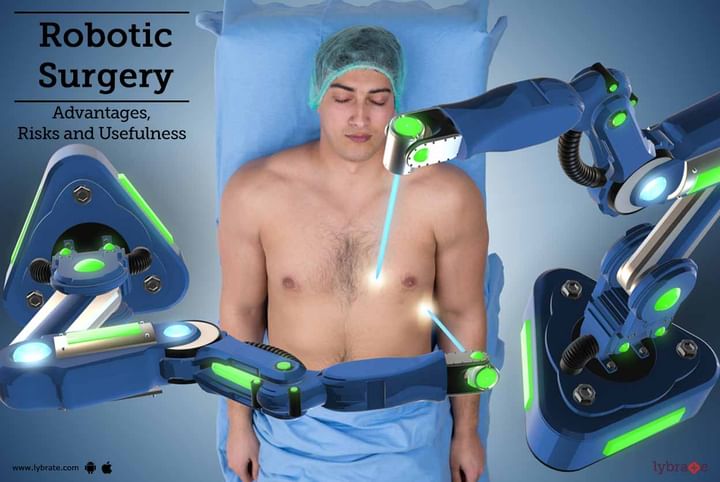Robotic Surgery - Advantages, Risks and Usefulness
Robot-assisted surgery or robotic surgery is a new age surgical procedure that helps a doctor to perform complicated procedures with better flexibility and more precision. This is essentially a union of high-end technology and the hand-eye co-ordination of a skilled surgeon. It helps a doctor to have a highly magnified, 3D high definition image of the human anatomy. The procedure is performed by making tiny incisions with the help of consoles in the robotic machine. Robotic surgery has found varied application in surgeries, primarily in cancers related to the kidney, colon, rectum, Uterus, stomach, esophagus and so on.
About the robotic surgery procedure:
This process of surgery was approved by the FDA in 2000 in the US. Since then it has been rapidly adopted by hospitals across US, Europe, and Asia. Typically, robotic instruments include a mechanical arm and a camera arm along with surgical instruments attached to it. The surgeon takes control of the mechanical arm and the console gives a 3D view to perform the procedure.
Primary Advantages of Robotic Surgery
For a surgeon, robotic surgery means greater precision, more control, and better outcome. For a patent, robotic surgery essentially means fewer complications, reduced blood loss, less pain, reduced chances of infection at the site, fewer scars etc. The recovery time for a patient also reduces substantially, which in turn implies lesser number of days in the hospital.
How is robotic surgery helpful for cancer patients?
Cancer surgeries are complicated in most of the cases. Having said this, an increased number of surgical oncologists are getting inclined to robotic surgeries for performing cancer-related procedures with greater amount of precision. As many cancer surgeries are technically demanding and take a prolonged time, Robotic surgery helps the surgeon perform a better job due its optics and better precision and control. However, the scope of robotic surgery varies on the type of cancer a patient is suffering from. Not all cancer-related surgeries qualify for robotic surgeries.
What are the risks involved in robotic surgery?
Like any open surgery, robotic surgeries have risks associated with them. The risks invovlved will be related to the organ being operated upon. There are no specific complications due to the Robot per se.
Which kind of patients qualify for robotic surgery?
Not all patients qualify for robotic surgery. This form of invasive surgery is only possible if a doctor feels that there is less amount of complications involved during the procedure. After weighing the risks, a doctor takes a call on whether or not to go ahead with a robotic surgery.



+1.svg)
